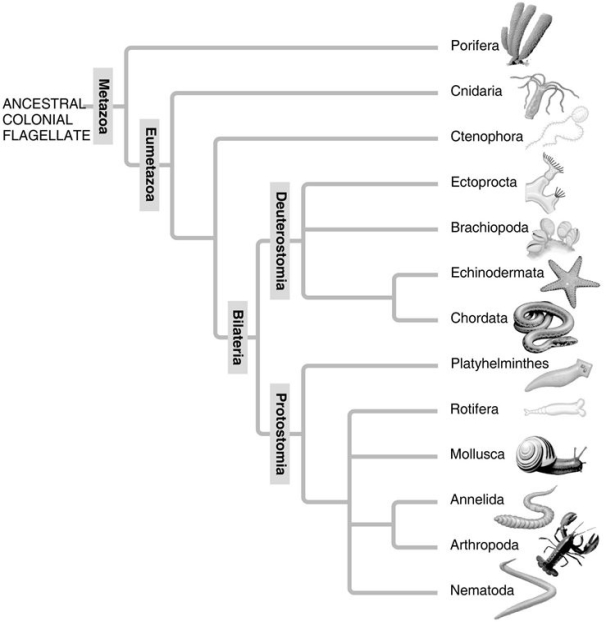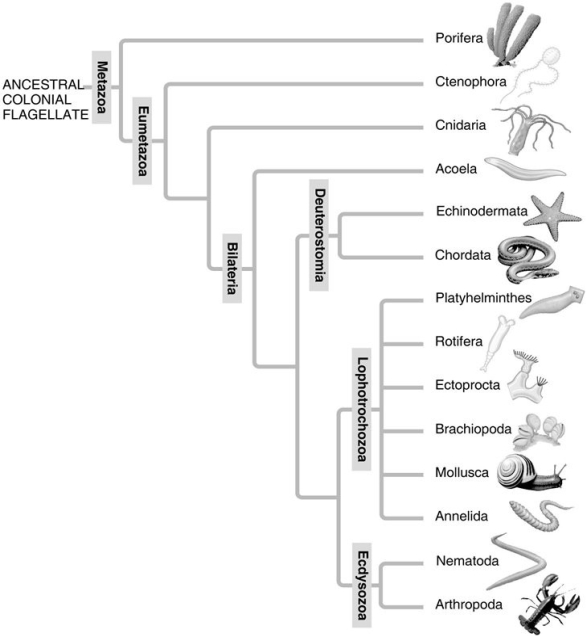Question 62
(Multiple Choice)
Use the following two diagrams (A and B)to answer the questions below.

A: Morphological phylogeny.

B: Molecular phylogeny.
-What is true of the deuterostomes in the molecular phylogeny (B)that is not true in the traditional phylogeny (A)?
A)Deuterostomia is a clade.
B)To maintain Deuterostomia as a clade, some phyla had to be removed from it.
C)Deuterostomia now includes the Acoela.
D)It is actually a grade, rather than a clade.
E)It diverged from the rest of the Bilateria earlier than did the Acoela.
Answer